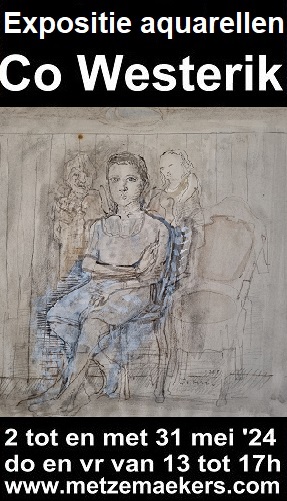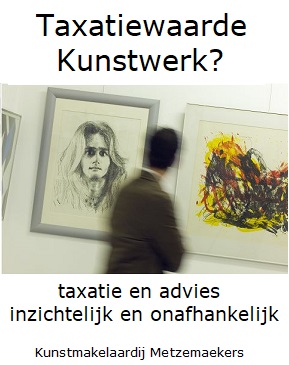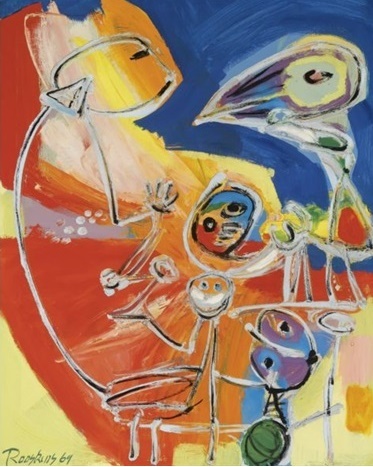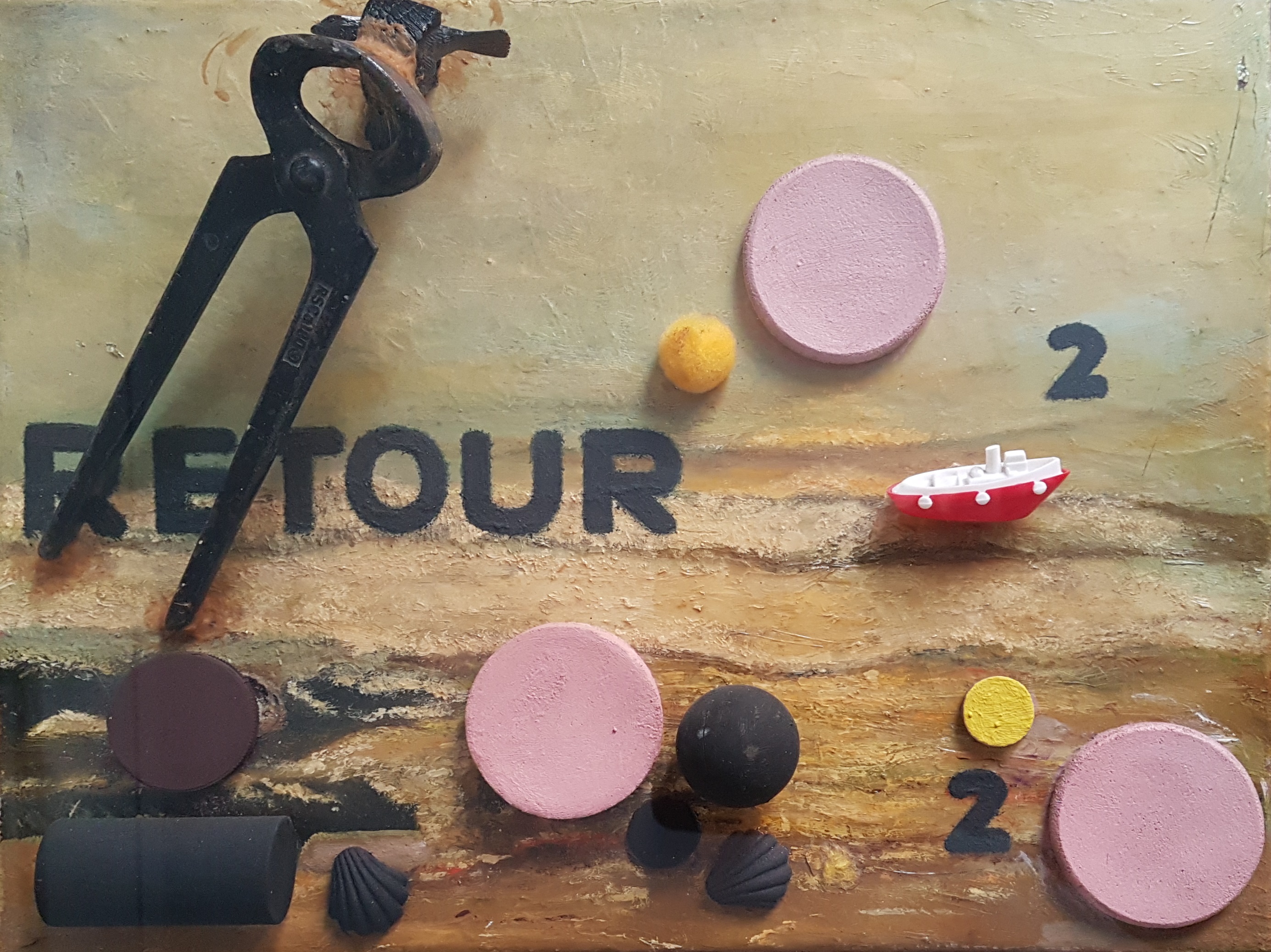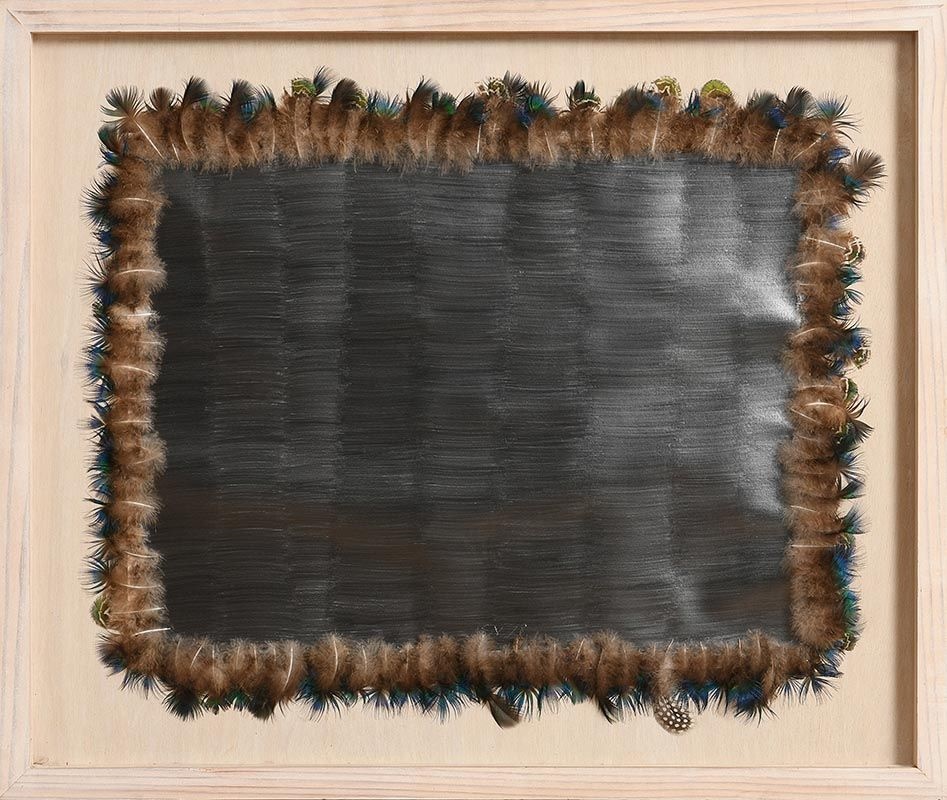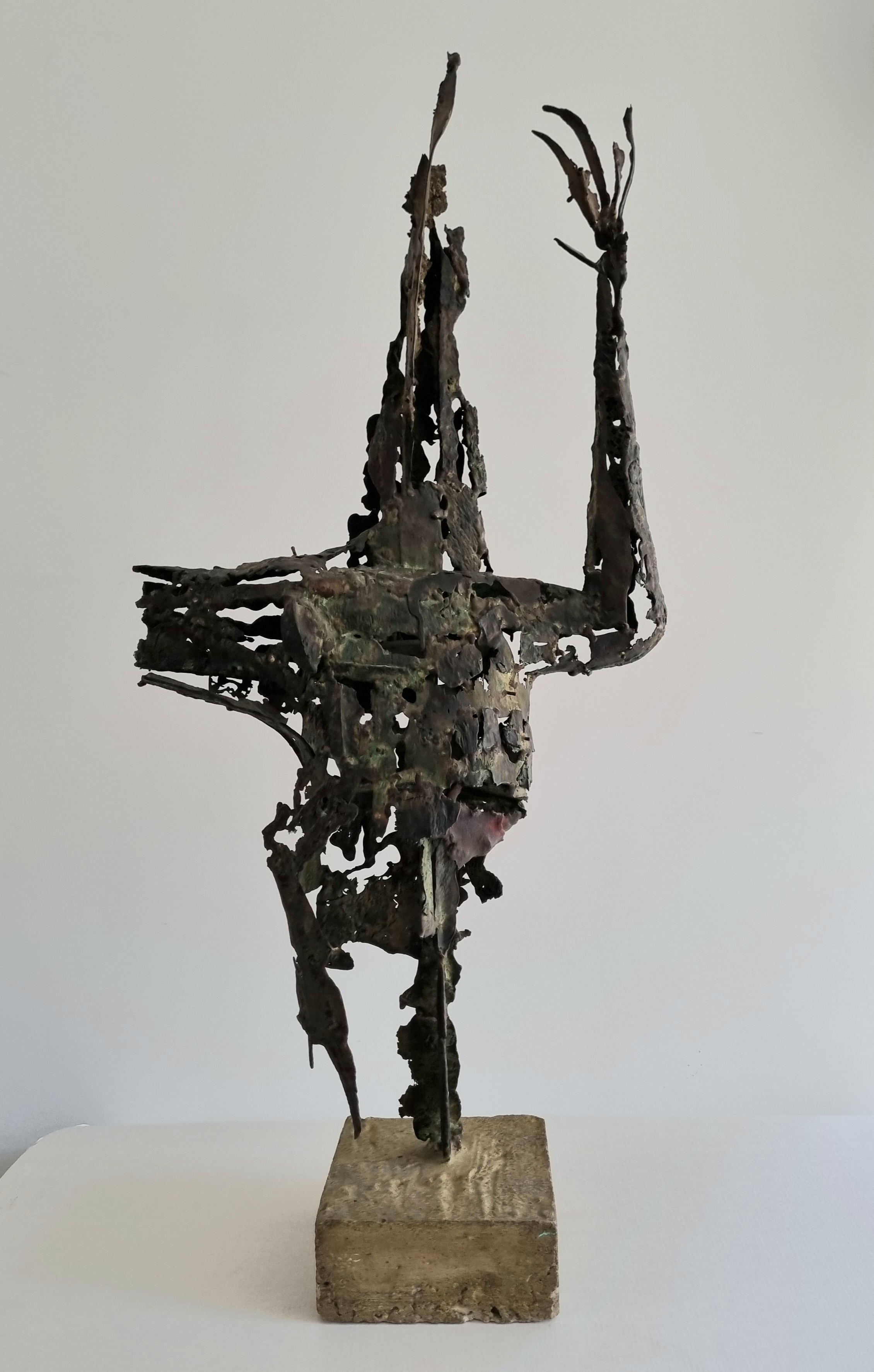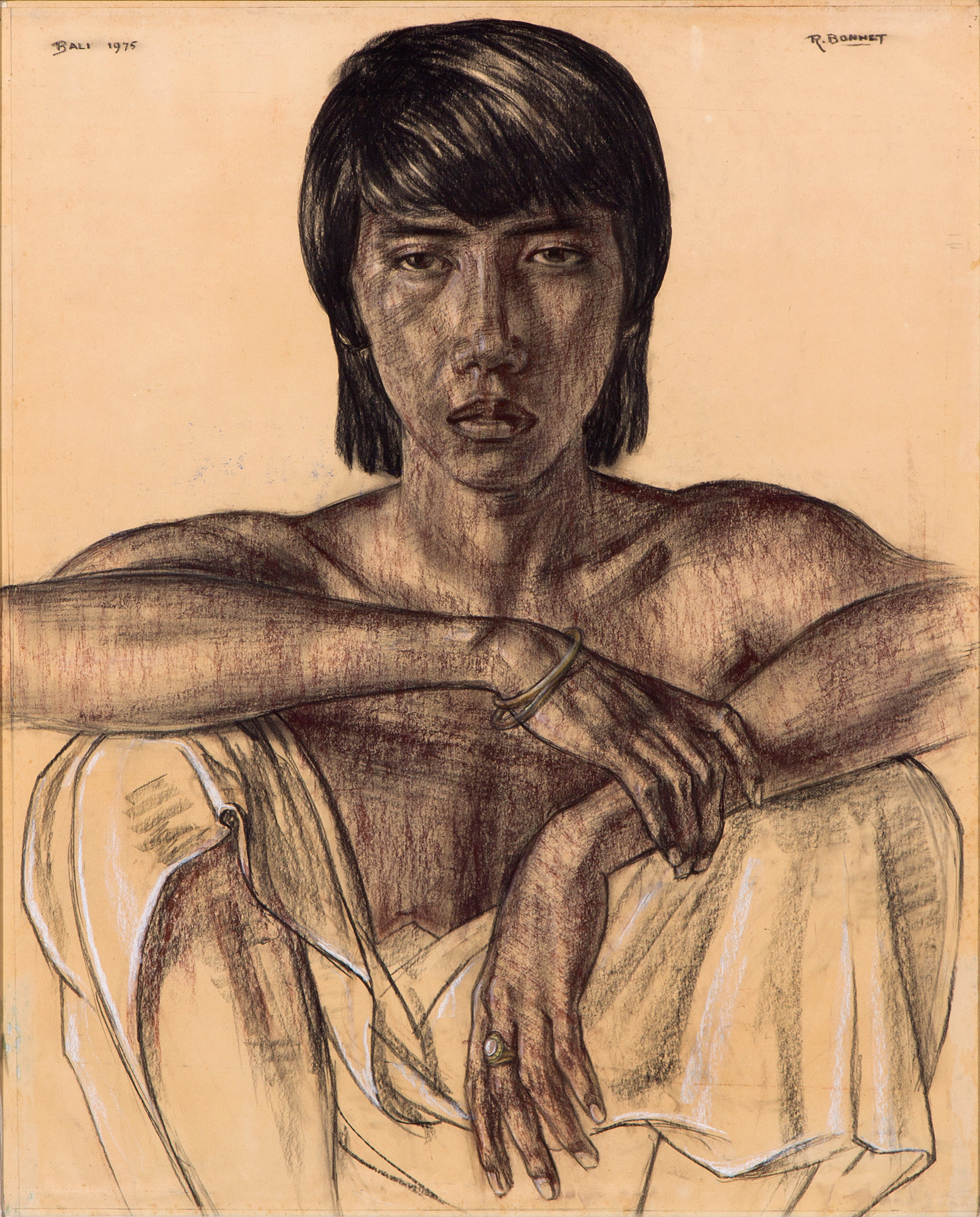
Beschrijving
Signed upper right and dated 'Bali' 1975 upper left. Black, brown and white chalk on paper. Provenance: Rosa Spier Huis, Laren, The Netherlands. This work was kept in the artist’s private collection in the Rosa Spier House until his death in 1978 and then bequeathed to the Rosa Spier House.
‘Er waren daar zulke mooie mensen’ (‘So many beautiful people there’) Bonnet used to say when he returned from yet another journey. And yes, most of them are very pretty and very young, the men and women posing in the works of Rudolf Bonnet. Thinking of his work, the dignified Javanese men come to mind whom he used to draw or the elegant Balinese girls he portrayed, usually en buste and sometimes half-length. Are they idealised? Mrs De Roever doesn’t think so: ‘Het is veeleer zo dat hij bij de keus van een model zijn eigen eisen stelde en daarbij was zijn eerste criterium vaak schoonheid, ook voor de mens’. (‘It’s rather a question of choosing a model matching his idea of beauty’.)1
His beautiful models however, were not only to be found on Bali. After finishing his education as a painter in Amsterdam, he travelled to Italy with his parents and settled in the ancient village of Anticoli Corrado near Rome. ‘Wat een ongelooflijke rijkdom aan schoonheid bevat toch dit oude cultuurland!’ (‘What an incredible wealth of beauty is to be found in this land of cultural heritage!’) he writes in a letter to a friend. 2 He became part of the community and would receive a warm welcome upon his return several decades later. He stayed for about six years and made a large number of drawings of people, villages and countryside that were well received in the Dutch art world. The works from what would be later known as the artist’s first Italian period made the young Bonnet financially independent as an artist.
Around 1920, Bali was discovered by European artists as being heaven on earth for painters. Bonnet arrives in Bali in 1929. He is about to become one of the most influential European artists being a source of inspiration and encouragement for local artists and playing an important role in the planning and realisation of the Museum for Balinese Art ‘Puri Lukisan’ in Ubud. ‘Puri Lukisan’ means ‘Palace of Paintings' and it was built according to Bonnet's design to house the collection of Balinese art assembled by Bonnet and Ubud prince and his lifelong friend Cokorda Gde Agung Sukawati.
Bonnet’s name is often mentioned together with that of Walter Spies, the Russian born German painter with whom he founded the Pita Maha (Great Spirit, Guiding inspiration) artists group, which encouraged local artists to raise their artistic standards. Bonnet took over Spies’ small water palace to live in and stayed in Ubud until 1940. During the war he was interned in camps in ParéParé, Bolong and at the end of the war he was brought to Makasar. Two years later, in 1947, he returned to Bali where he built himself a house and studio in Campuhan. A second prosperous Indonesian artistic period was about to start. He was commissioned with various large projects by President Soekarno but eventually fell out of favour and had to leave the country in 1957. Fifteen years later he returned to resume his work for the museum with renewed fervour and returned to Bali on a regular basis.
In 1963 Bonnet returned to The Netherlands and settled in the village of Blaricum. Six years later he moved to the newly opened Rosa Spier Huis in Laren, a home for elderly artists and scientists. The house was founded by harpist Rosa Spier and humanist and arts patron Henriëtte Polak. Painter, poet and composer Leo Rikmenspoel was living in the Rosa Spier retirement home as well and Bonnet’s portrait of his fellow artist with his imposing looks is included in this sale. It is one of three works by Bonnet in this auction coming from the collection of the Rosa Spier Huis and the proceeds will be used for a new building to be realised in 2018.
Up to the last years of his life, Bonnet continued his regular travels to Indonesia always bringing back new work when coming home to Laren. The drawing of a young Balinese man in this sale dated 1975 must have been done during one of these journeys, the last of them being in 1977 when he was honoured with the golden art medal Dharma Kusuma awarded to him by Mr. Sukarmen, governor of Bali.3
Bonnet was a key figure in the development of modern Balinese art but most of all he has played a leading role in establishing the Westerner's image of Bali that still exists today.
1 Dr. H. de Roever-Bonnet, Rudolf Bonnet Een zondagskind - Zijn leven en zijn werk, Wijk en Aalburg 1991, p.84
2 ibid. p.17
3 ibid. p.140
Opbrengst
€ 5.500
Details
- Databanknummer:
- 79620
- Lotnummer:
- -
- Advertentietype
- Archief
- Instelling:
- Venduehuis Den Haag
- Veilingdatum:
- -
- Veilingnummer:
- -
- Stad
- -
- Limietprijs
- -
- Aankoopprijs
- -
- Verkoopprijs
- -
- Hamerprijs
- -
- Status
- Verkocht
Technische details
- Kunstvorm:
- Schilder- en Tekenkunst
- Technieken:
- Zwart krijt, Wit krijt, Bruin krijt
- Dragers:
- Papier
- Lengte:
- 74 cm
- Breedte:
- 59 cm
- Hoogte:
- -
- Oplage:
- -
Beschrijving
Signed upper right and dated 'Bali' 1975 upper left. Black, brown and white chalk on paper. Provenance: Rosa Spier Huis, Laren, The Netherlands. This work was kept in the artist’s private collection in the Rosa Spier House until his death in 1978 and then bequeathed to the Rosa Spier House.
‘Er waren daar zulke mooie mensen’ (‘So many beautiful people there’) Bonnet used to say when he returned from yet another journey. And yes, most of them are very pretty and very young, the men and women posing in the works of Rudolf Bonnet. Thinking of his work, the dignified Javanese men come to mind whom he used to draw or the elegant Balinese girls he portrayed, usually en buste and sometimes half-length. Are they idealised? Mrs De Roever doesn’t think so: ‘Het is veeleer zo dat hij bij de keus van een model zijn eigen eisen stelde en daarbij was zijn eerste criterium vaak schoonheid, ook voor de mens’. (‘It’s rather a question of choosing a model matching his idea of beauty’.)1
His beautiful models however, were not only to be found on Bali. After finishing his education as a painter in Amsterdam, he travelled to Italy with his parents and settled in the ancient village of Anticoli Corrado near Rome. ‘Wat een ongelooflijke rijkdom aan schoonheid bevat toch dit oude cultuurland!’ (‘What an incredible wealth of beauty is to be found in this land of cultural heritage!’) he writes in a letter to a friend. 2 He became part of the community and would receive a warm welcome upon his return several decades later. He stayed for about six years and made a large number of drawings of people, villages and countryside that were well received in the Dutch art world. The works from what would be later known as the artist’s first Italian period made the young Bonnet financially independent as an artist.
Around 1920, Bali was discovered by European artists as being heaven on earth for painters. Bonnet arrives in Bali in 1929. He is about to become one of the most influential European artists being a source of inspiration and encouragement for local artists and playing an important role in the planning and realisation of the Museum for Balinese Art ‘Puri Lukisan’ in Ubud. ‘Puri Lukisan’ means ‘Palace of Paintings' and it was built according to Bonnet's design to house the collection of Balinese art assembled by Bonnet and Ubud prince and his lifelong friend Cokorda Gde Agung Sukawati.
Bonnet’s name is often mentioned together with that of Walter Spies, the Russian born German painter with whom he founded the Pita Maha (Great Spirit, Guiding inspiration) artists group, which encouraged local artists to raise their artistic standards. Bonnet took over Spies’ small water palace to live in and stayed in Ubud until 1940. During the war he was interned in camps in ParéParé, Bolong and at the end of the war he was brought to Makasar. Two years later, in 1947, he returned to Bali where he built himself a house and studio in Campuhan. A second prosperous Indonesian artistic period was about to start. He was commissioned with various large projects by President Soekarno but eventually fell out of favour and had to leave the country in 1957. Fifteen years later he returned to resume his work for the museum with renewed fervour and returned to Bali on a regular basis.
In 1963 Bonnet returned to The Netherlands and settled in the village of Blaricum. Six years later he moved to the newly opened Rosa Spier Huis in Laren, a home for elderly artists and scientists. The house was founded by harpist Rosa Spier and humanist and arts patron Henriëtte Polak. Painter, poet and composer Leo Rikmenspoel was living in the Rosa Spier retirement home as well and Bonnet’s portrait of his fellow artist with his imposing looks is included in this sale. It is one of three works by Bonnet in this auction coming from the collection of the Rosa Spier Huis and the proceeds will be used for a new building to be realised in 2018.
Up to the last years of his life, Bonnet continued his regular travels to Indonesia always bringing back new work when coming home to Laren. The drawing of a young Balinese man in this sale dated 1975 must have been done during one of these journeys, the last of them being in 1977 when he was honoured with the golden art medal Dharma Kusuma awarded to him by Mr. Sukarmen, governor of Bali.3
Bonnet was a key figure in the development of modern Balinese art but most of all he has played a leading role in establishing the Westerner's image of Bali that still exists today.
1 Dr. H. de Roever-Bonnet, Rudolf Bonnet Een zondagskind - Zijn leven en zijn werk, Wijk en Aalburg 1991, p.84
2 ibid. p.17
3 ibid. p.140
Opbrengst
€ 5.500
Aangeboden kunst
Een selectie uit ons kunstaanbod
